Research on Cavitation Performance of Bidirectional Integrated Pump Gate
Abstract
:1. Introduction
2. Physical Model and Numerical Calculation Method
2.1. Geometric Models
2.2. Grid Division
2.3. Numerical Calculation Method
2.3.1. Turbulence Model
2.3.2. Boundary Conditions
3. Analysis of Results
3.1. Bidirectional Operation Hydraulic Performance Curve of One-Piece Pump and Gate
3.2. Cavitation Flow Analysis
3.2.1. Impeller Cavitation Analysis
3.2.2. Impeller Blade Surface Flow Analysis
3.2.3. Vortex Analysis of Impeller
4. Conclusions
Author Contributions
Funding
Data Availability Statement
Conflicts of Interest
References
- Zhao, Q. Analysis of the characteristics and application advantages of integrated pump gate. Mech. Electr. Inf. 2020, 52–53. (In Chinese) [Google Scholar] [CrossRef]
- Tan, Y. Types and Comparative Analysis of Drainage Gate Stations. Shaanxi Water Conserv. 2021, 246, 242–244. (In Chinese) [Google Scholar] [CrossRef]
- Song, J. Application of integrated pump and gate in the management of Fuzhou inland water system. Fujian Constr. 2018, 140–142. (In Chinese) [Google Scholar]
- Guo, M.; Chen, Z.; Lee, Y.; Choi, Y.-D. Air Entrainment Flow Characteristics of Horizontal and Elbow Type Gate Pump-Sump Models. KSFM J. Fluid Mach. 2019, 22, 54–61. [Google Scholar] [CrossRef]
- Li, H.L.; Fu, P. Study on issues related to pump selection and installation of Xinquansi pump station. Hunan Hydropower 2020, 85–87. (In Chinese) [Google Scholar] [CrossRef]
- Li, M. Design and technical point analysis of integrated pump gate. Mech. Electr. Inf. 2020, 126–127. (In Chinese) [Google Scholar] [CrossRef]
- Jin, L. Development of a submersible gate pump with built-in impeller. Pump Technol. 2015, 23–26. (In Chinese) [Google Scholar]
- Wei, Z. Study on the application of pump and gate engineering in drainage and flood control system. Shaanxi Water Conserv. 2021, 81–83. (In Chinese) [Google Scholar]
- Kentaro, F.; Yu, K.; Hiroaki, F. Validation of Inundation Damage Reduction by a Pump Gate with the New Type of Horizontal Axial Submersible Pump. JDR 2021, 16, 381–386. [Google Scholar]
- Sun, X.; Liu, S.; Manickam, S.; Tao, Y.; Yoon, J.Y.; Xuan, X. Intensification of biodiesel production by hydrodynamic cavitation: A critical review. Renew. Sustain. Energy Rev. 2023, 179, 113277. [Google Scholar] [CrossRef]
- Brennen, C.E. Cavitation and Bubble Dynamics; Oxford University Press: Oxford, UK, 1995. [Google Scholar]
- Yang, F.; Jin, Y.; Liu, C.; Tang, F.; Cheng, L.; Yang, H. Performance test and numerical analysis of bi-directional submersible cross-flow pump device. J. Agric. Eng. 2012, 28, 60–67. (In Chinese) [Google Scholar] [CrossRef]
- Liu, J.; Lu, W.; Zhou, B.; Sun, C.; Xia, H. Experimental study on the external characteristics of fully-crossflow pumping device--Taking Longkungou North Stormwater Drainage Pumping Station as an Example. China Rural. Water Conserv. Hydropower 2022, 1–14. Available online: https://kns.cnki.net/kcms/detail/detail.aspx?FileName=ZNSD202208028&DbName=CJFQ2022 (accessed on 23 July 2023). (In Chinese).
- Wu, W. Study on Cavitation and Gap Leakage Vortex Characteristics of Axial Water Jet Propulsion Pump; Xi’an University of Technology: Xi’an, China, 2021. (In Chinese) [Google Scholar] [CrossRef]
- Long, Y.; An, C.; Zhu, R.; Chen, J. Research on hydrodynamics of high velocity regions in a water-jet pump based on experimental and numerical calculations at different cavitation conditions. Phys. Fluids 2021, 33, 045124. [Google Scholar] [CrossRef]
- Yun, L.; Yan, Z.; Jianping, C.; Rongsheng, Z.; Dezhong, W. A cavitation performance prediction method for pumps: Part2-sensitivity and accuracy. Nucl. Eng. Technol. 2021, 53, 3612–3624. [Google Scholar] [CrossRef]
- Yun, L.; Rongsheng, Z.; Dezhong, W. A cavitation performance prediction method for pumps PART1-Proposal and feasibility. Nucl. Eng. Technol. 2020, 52, 2471–2478. [Google Scholar] [CrossRef]
- Qiu, N.; Zhu, H.; Long, Y.; Zhong, J.; Zhu, R.; Wu, S. Assessment of Cavitation Erosion in a Water-Jet Pump Based on the Erosive Power Method. Scanning 2021, 2021, 5394782. [Google Scholar] [CrossRef]
- Xie, C.; Xuan, W.; Feng, A.; Sun, F. Analysis of Hydraulic Performance and Flow Characteristics of Inlet and Outlet Channels of Integrated Pump Gate. Water 2022, 14, 2747. [Google Scholar] [CrossRef]
- Xie, C.; Fu, T.; Xuan, W.; Bai, C.; Wu, L. Optimization and Internal Flow Analysis of Inlet and Outlet Horn of Integrated Pump Gate. Processes 2022, 10, 1753. [Google Scholar] [CrossRef]
- Wang, Z.Y.; Cheng, H.Y.; Ji, B.; Peng, X.X. Numerical investigation of inner structure and its formation mechanism of cloud cavitating flow. Int. J. Multiph. Flow 2023, 165, 104484. [Google Scholar] [CrossRef]
- Wang, Y. Research on Internal Cavitation Flow Characteristics and Performance Improvement of Turbopump Inducer. Master’s Thesis, Beijing University of Technology, Beijing, China, 2021. [Google Scholar] [CrossRef]
- Zhang, G.; Zhang, D.; Ge, M.; Petkovšek, M.; Coutier-Delgosha, O. Experimental investigation of three distinct mechanisms for the transition from sheet to cloud cavitation. Int. J. Heat Mass Transf. 2022, 197, 123372. [Google Scholar] [CrossRef]
- Zhang, G.; Khlifa, I.; Fezzaa, K.; Ge, M.; Coutier-Delgosha, O. Experimental investigation of internal two-phase flow structures and dynamics of quasi-stable sheet cavitation by fast synchrotron X-ray imaging. Phys. Fluids 2020, 32, 113310. [Google Scholar] [CrossRef]
- Ge, M.; Petkovšek, M.; Zhang, G.; Jacobs, D.; Coutier-Delgosha, O. Cavitation dynamics and thermodynamic effects at elevated temperatures in a small Venturi channel. Int. J. Heat Mass Transf. 2021, 170, 120970. [Google Scholar] [CrossRef]
- Ge, M.; Manikkam, P.; Ghossein, J.; Subramanian, R.K.; Coutier-Delgosha, O.; Zhang, G. Dynamic mode decomposition to classify cavitating flow regimes induced by thermodynamic effects. Energy 2022, 254, 124426. [Google Scholar] [CrossRef]
- Ge, M.; Zhang, G.; Petkovšek, M.; Long, K.; Coutier-Delgosha, O. Intensity and regimes changing of hydrodynamic cavitation considering temperature effects. J. Clean. Prod. 2022, 338, 130470. [Google Scholar] [CrossRef]
- Ge, M.; Sun, C.; Zhang, G.; Coutier-Delgosha, O.; Fan, D. Combined suppression effects on hydrodynamic cavitation performance in Venturi-type reactor for process intensification. Ultrason. Sonochemistry 2022, 86, 106035. [Google Scholar] [CrossRef]
- GB/T 3216-2006/ISO 9906:2012; Rotodynamic Pumps—Hydraulic Performance Acceptance Tests—Grades 1, 2 and 3. AQSIQ: Beijing, China, 2019.

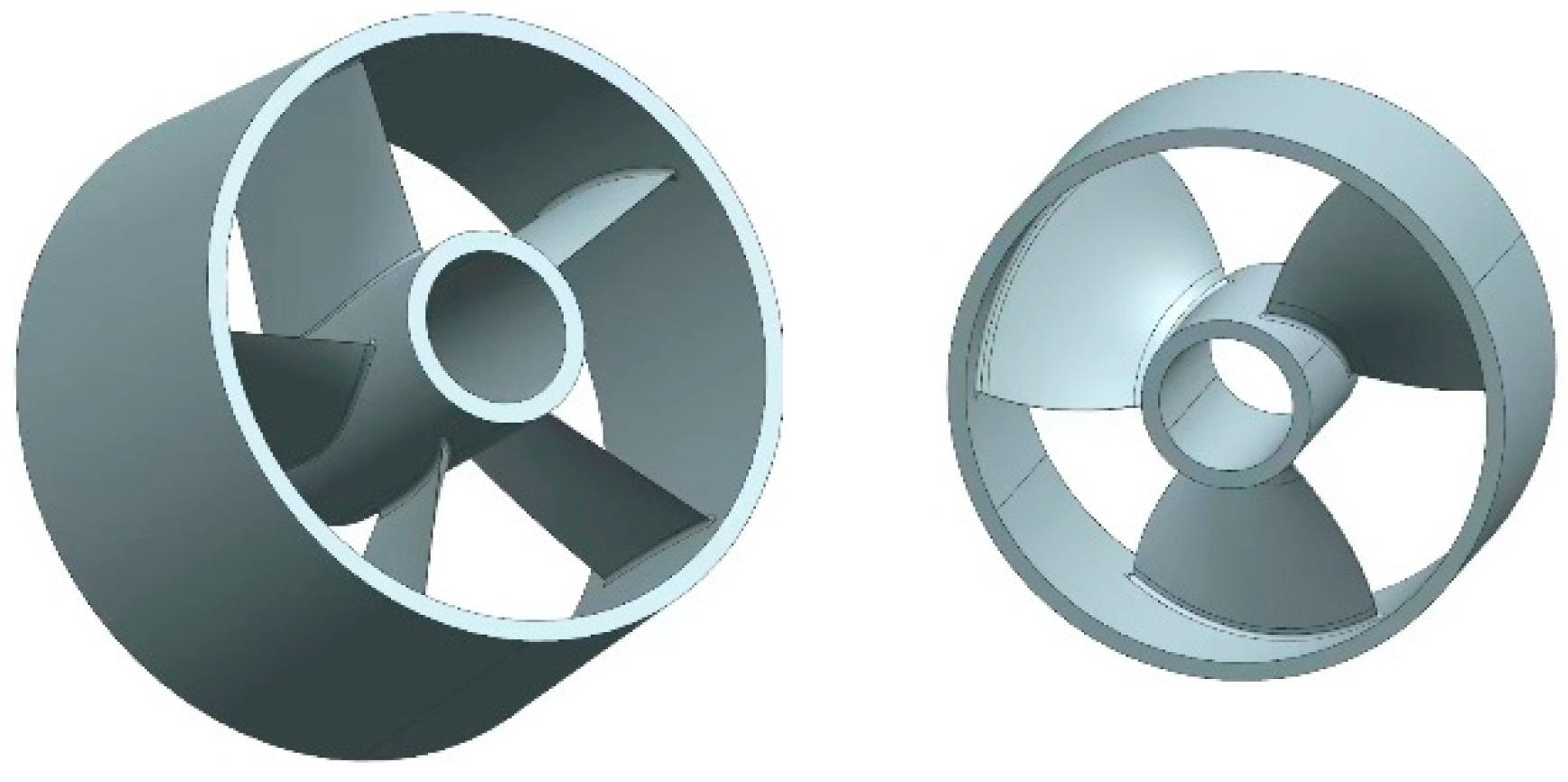
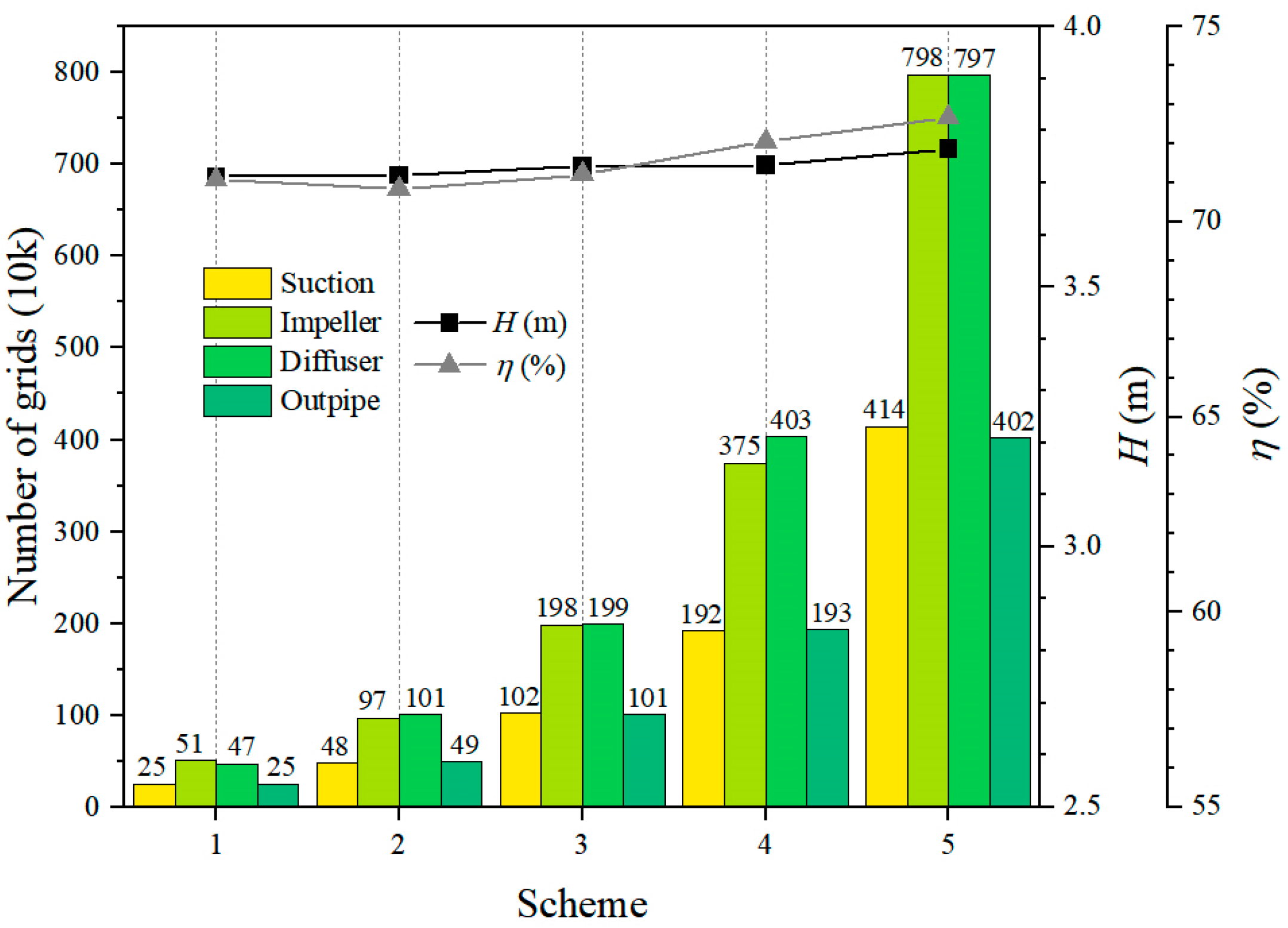
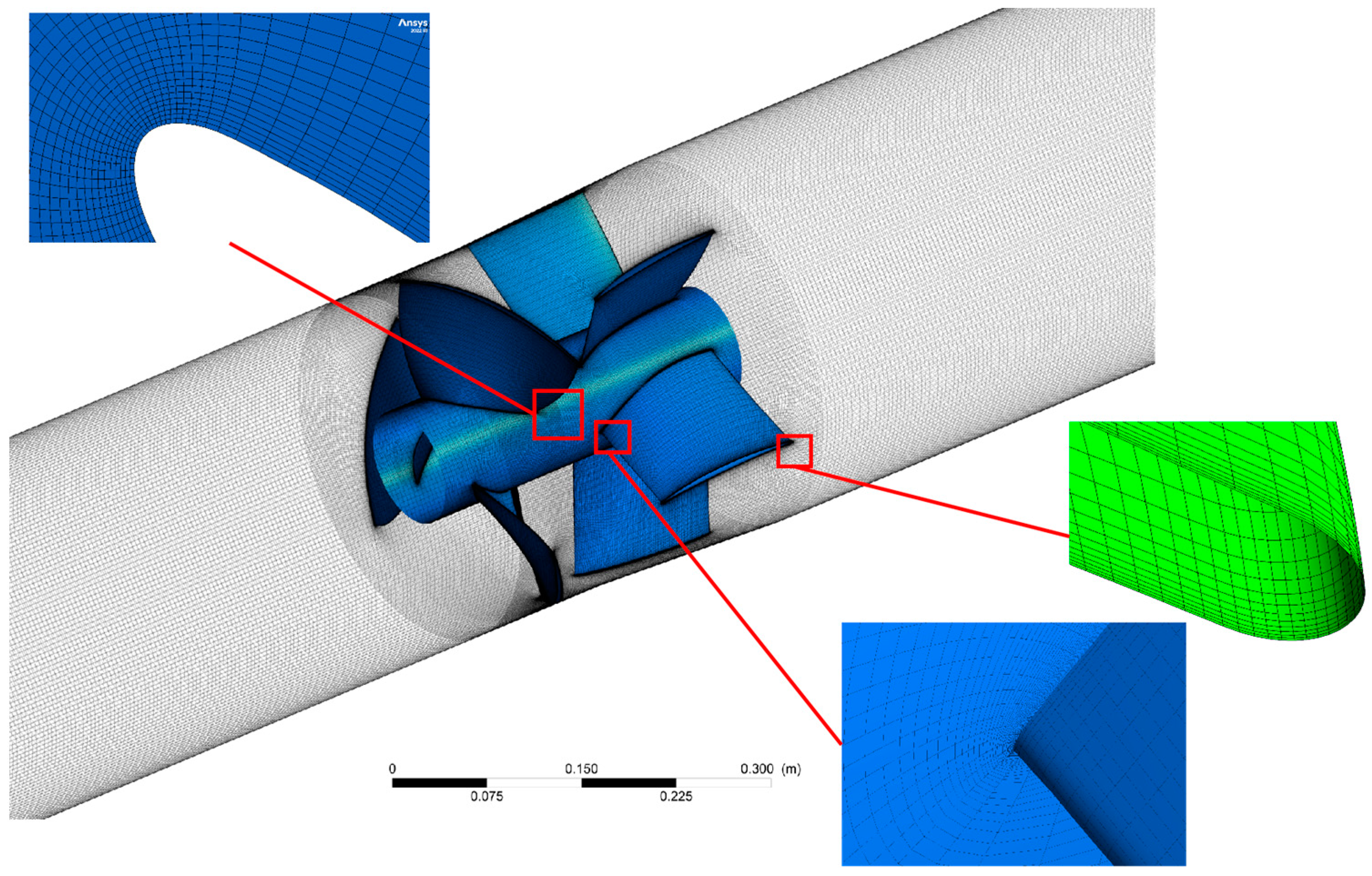
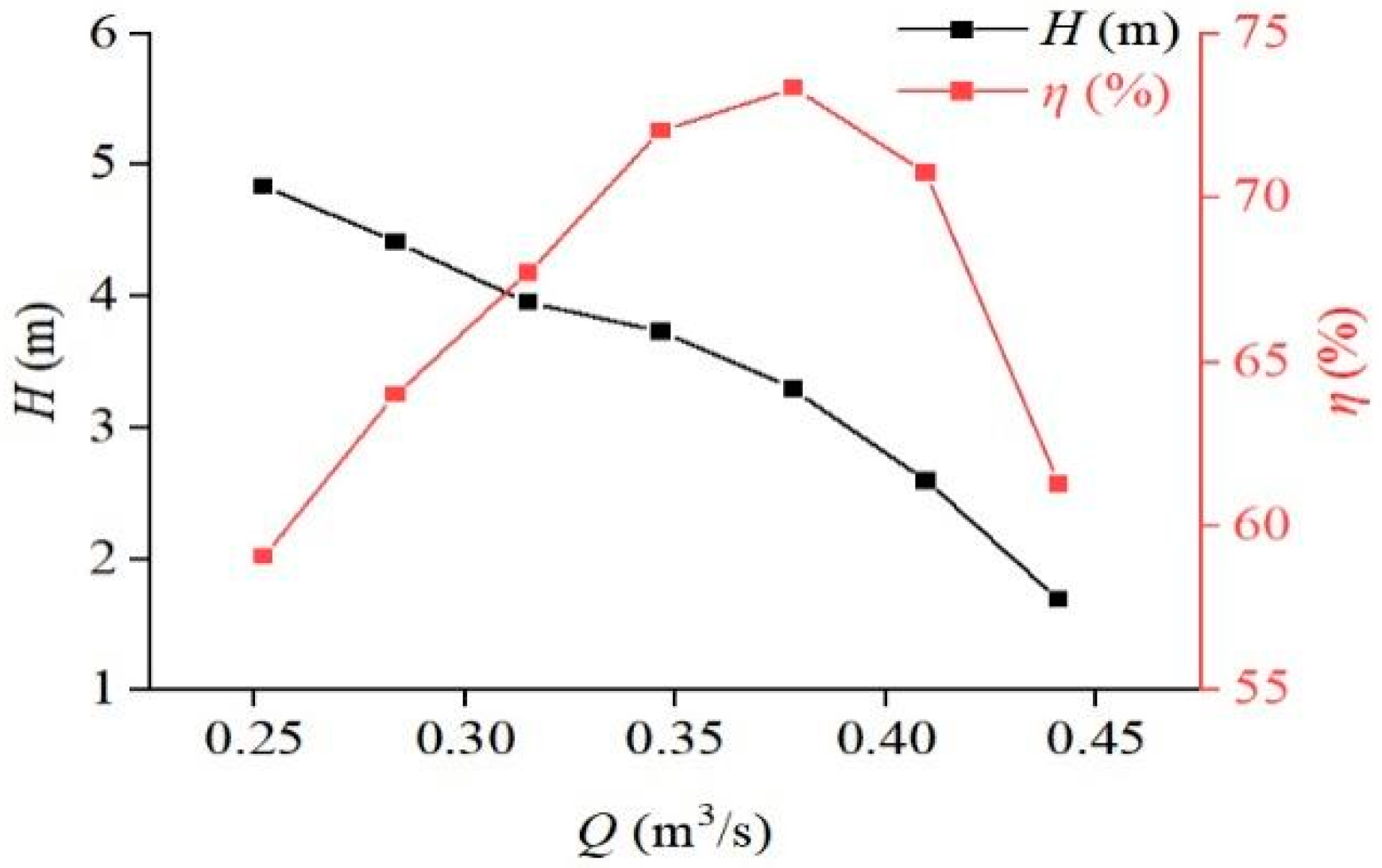
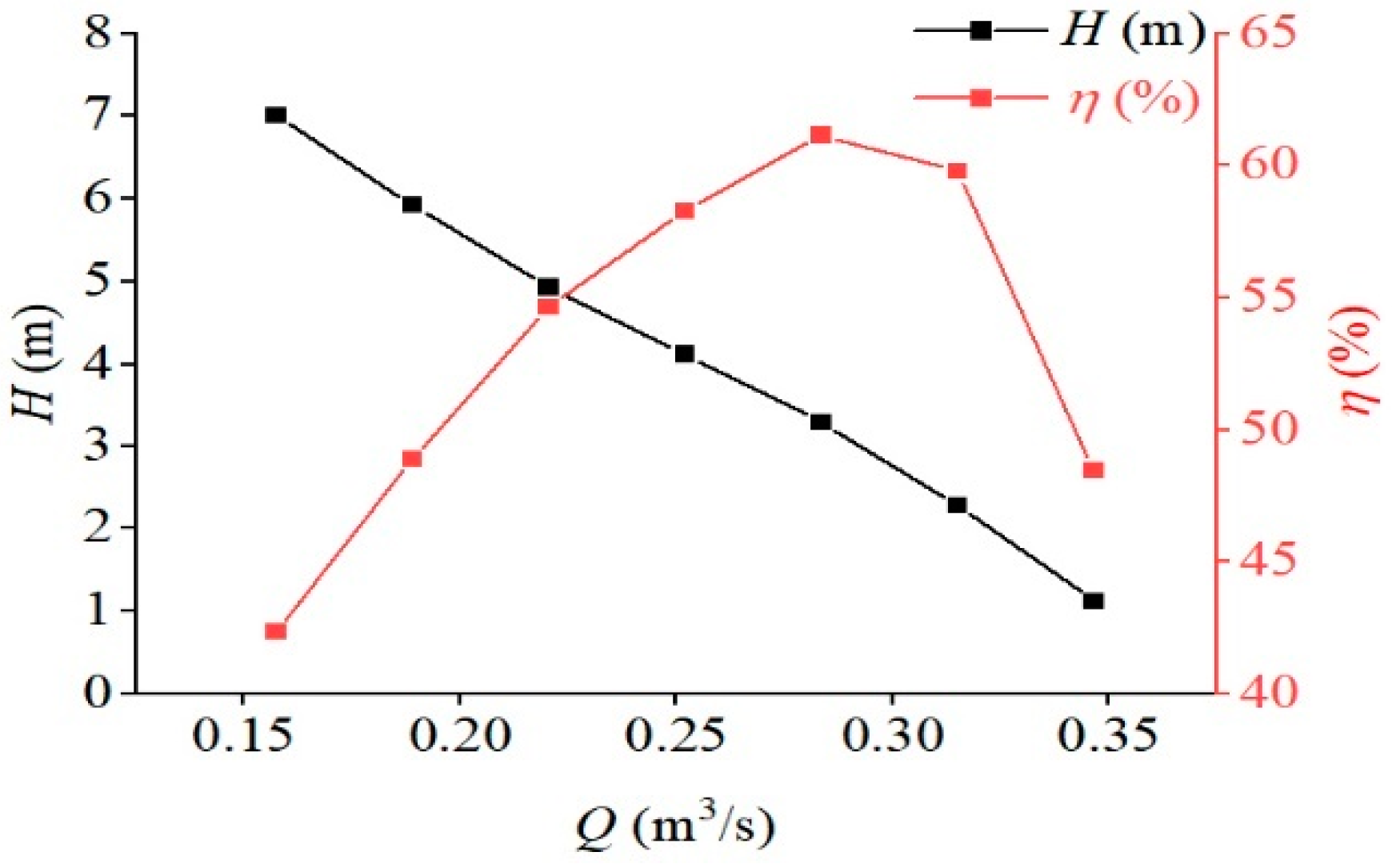
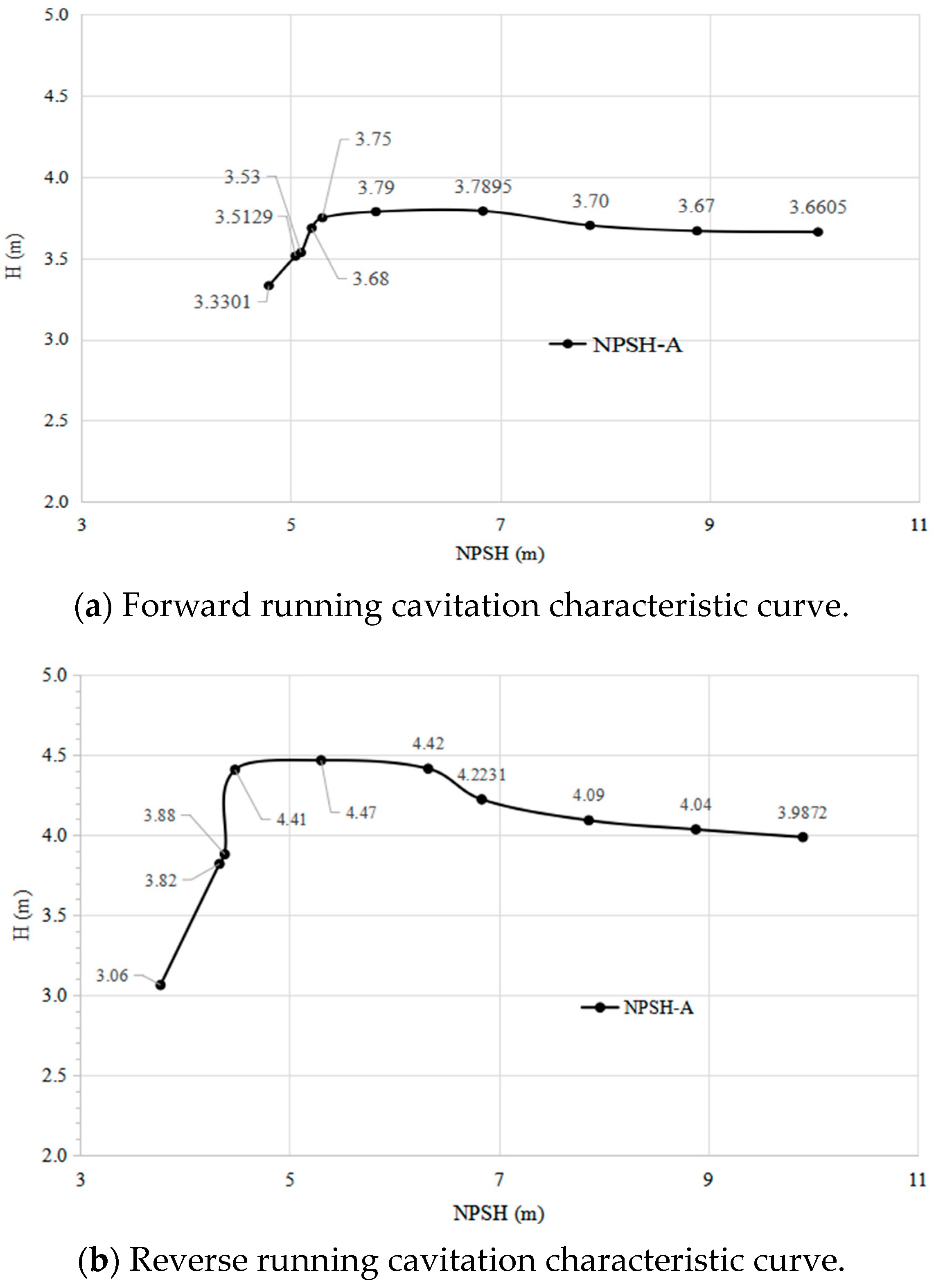
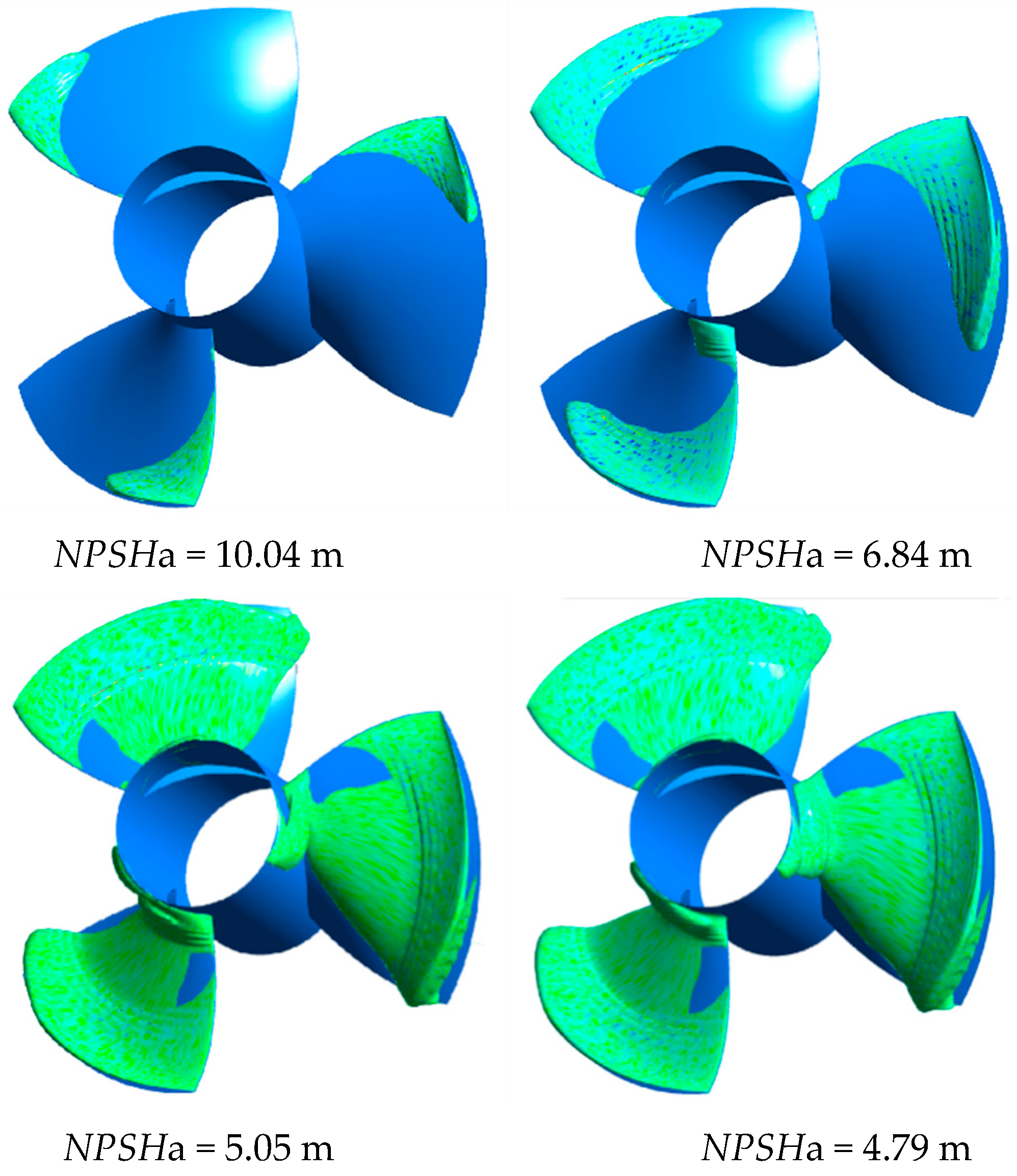
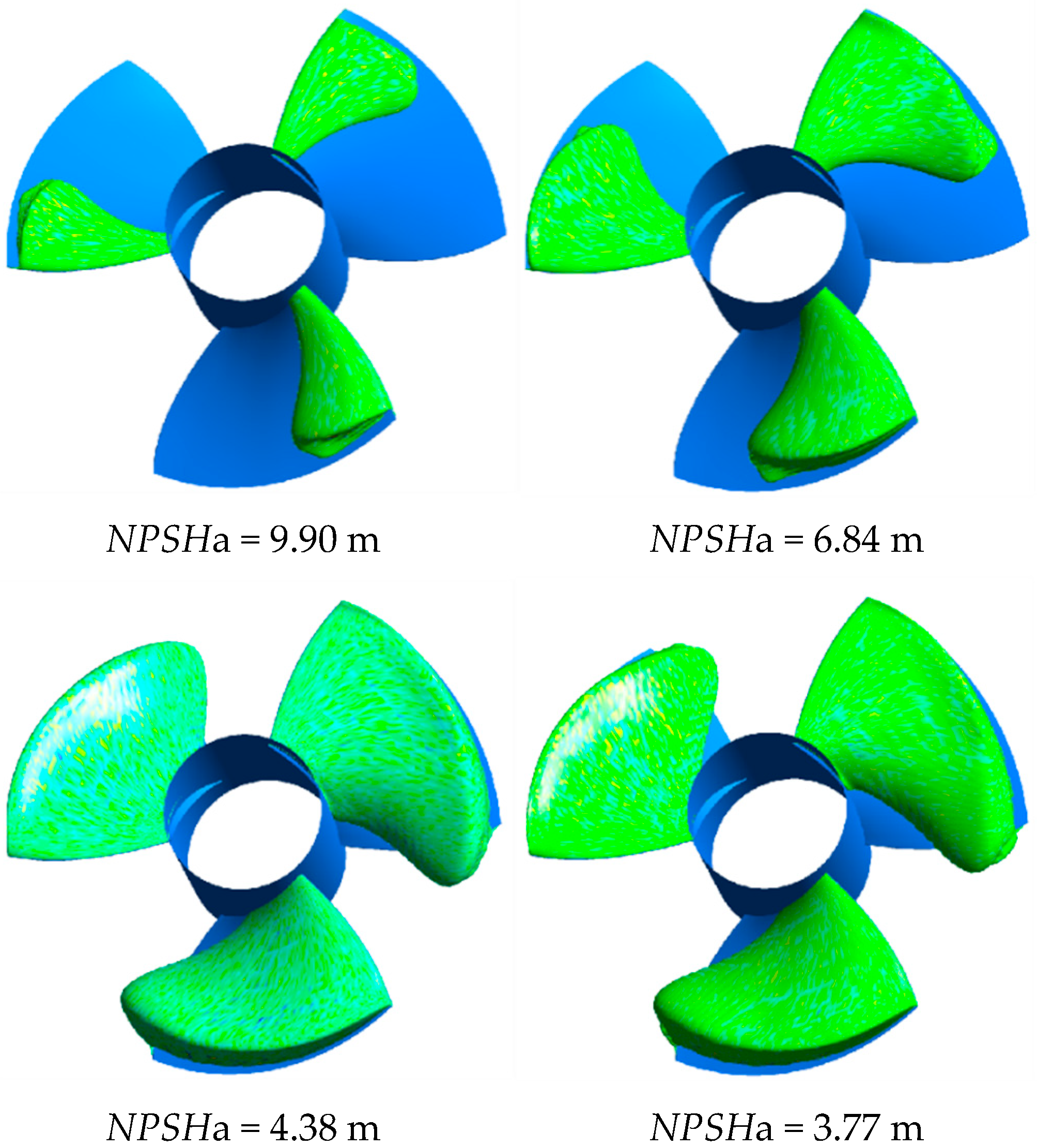

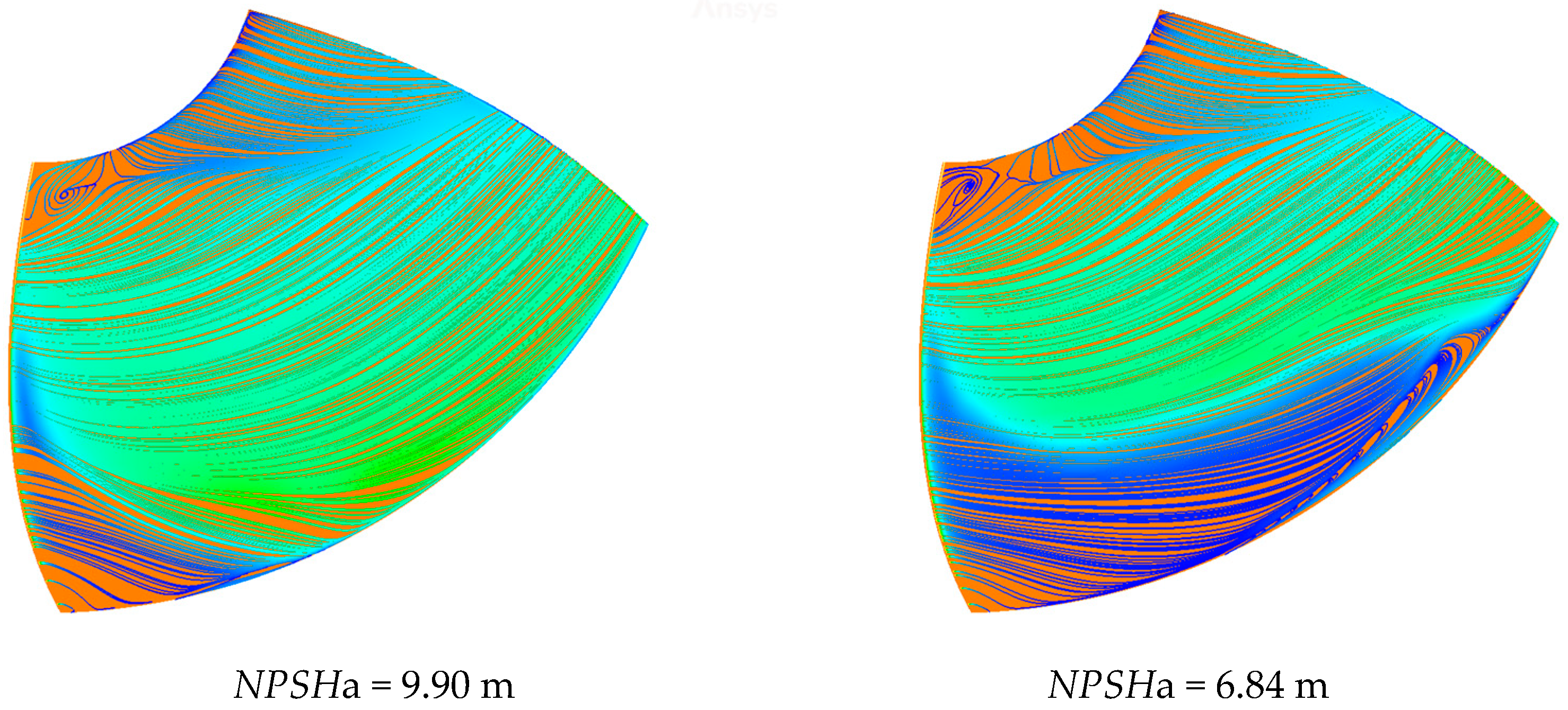
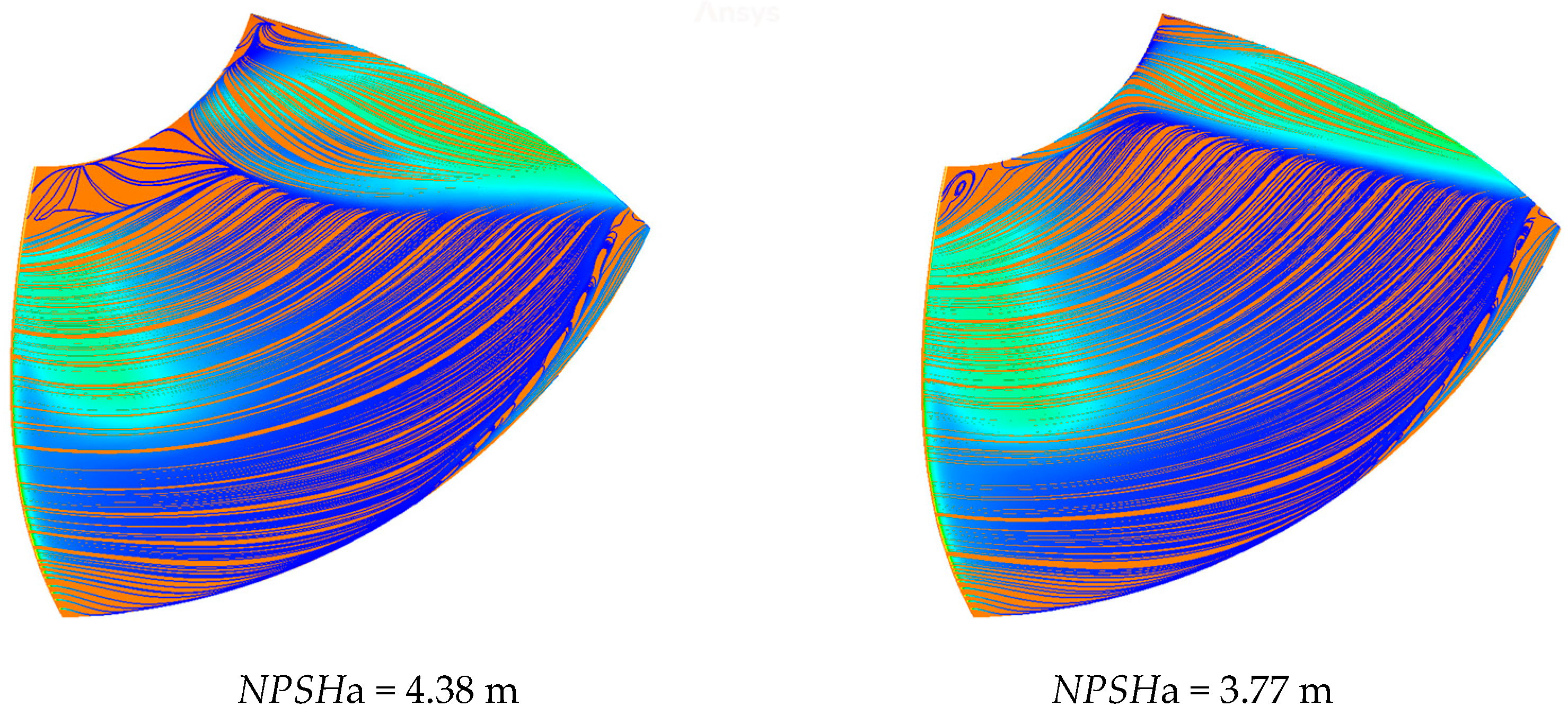

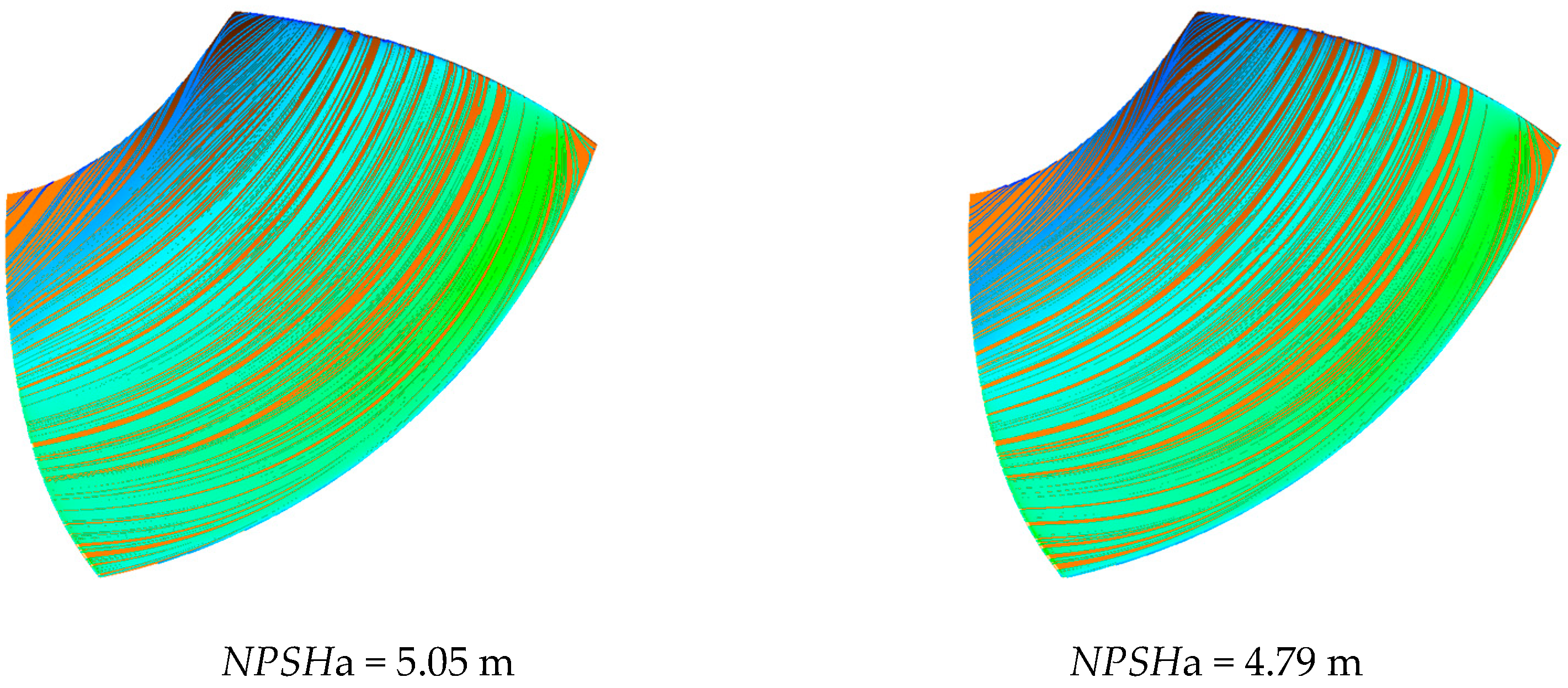
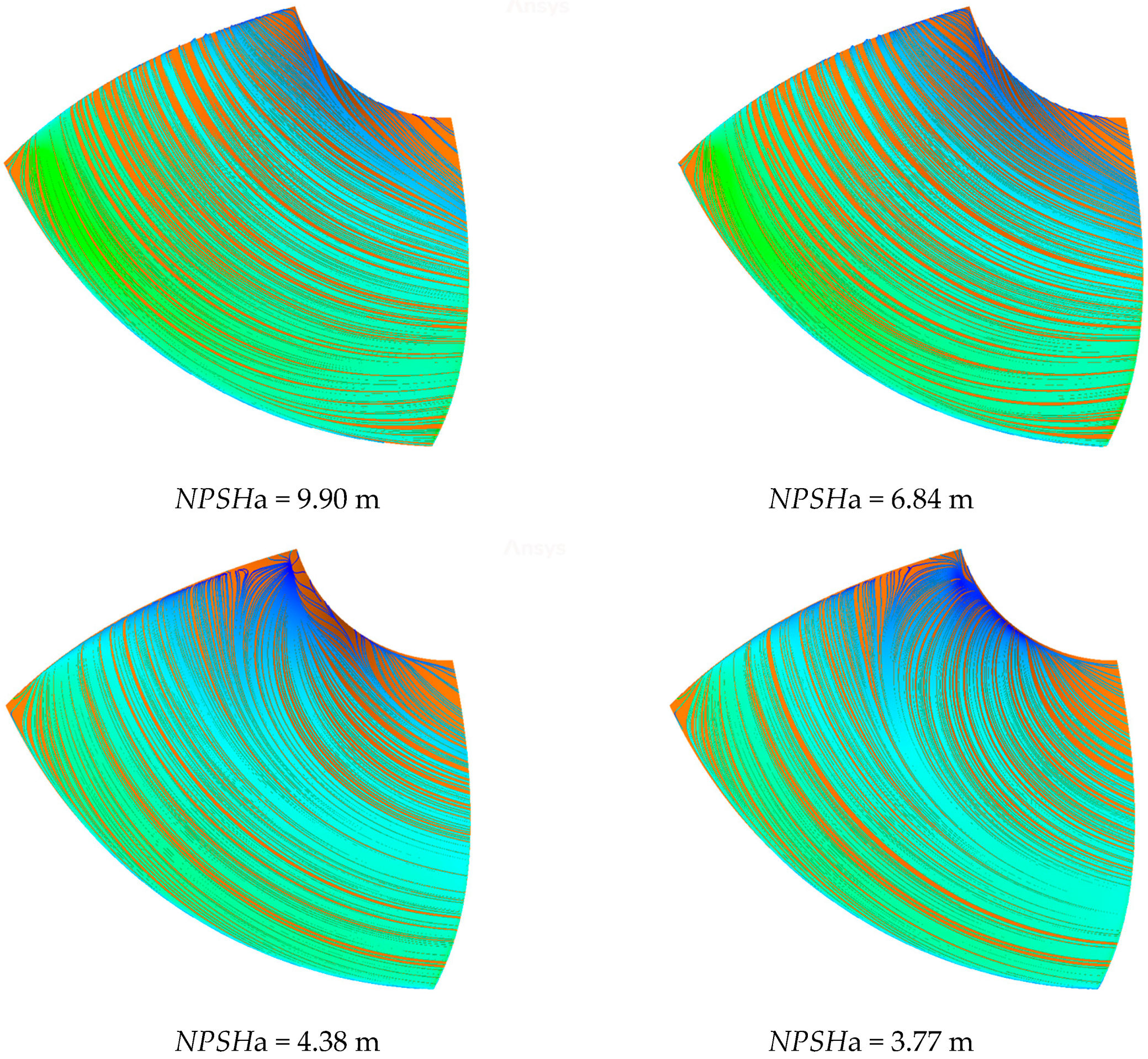
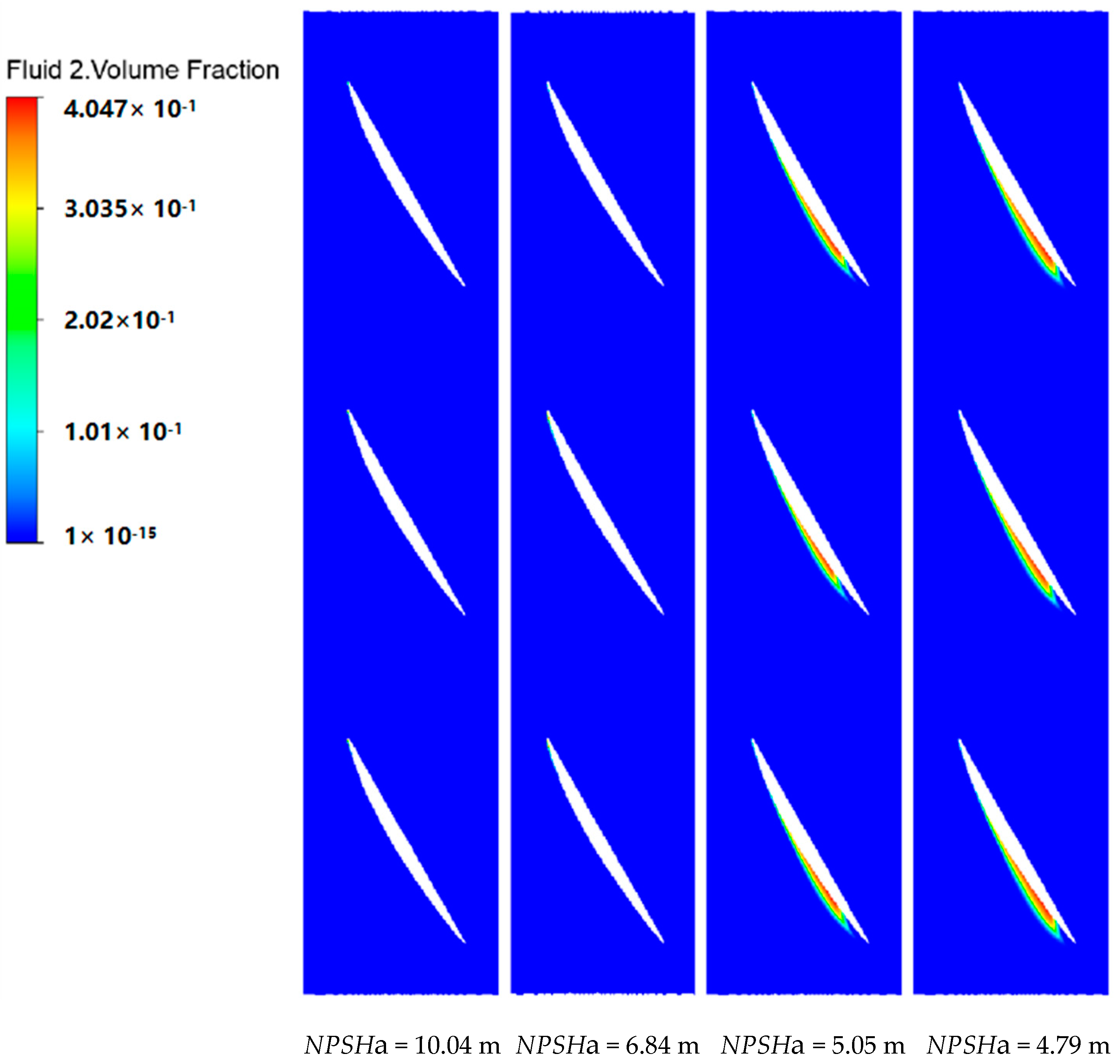



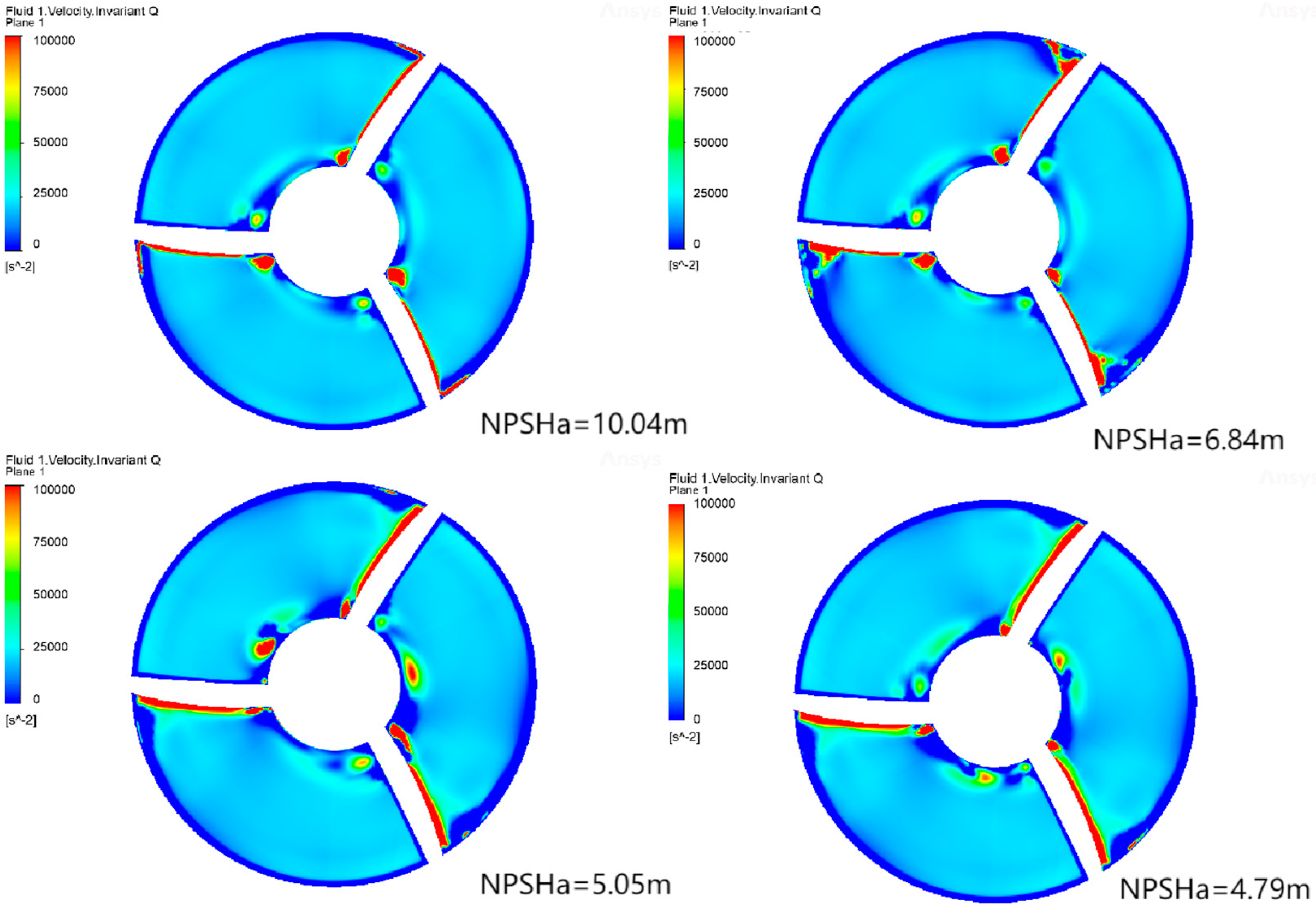
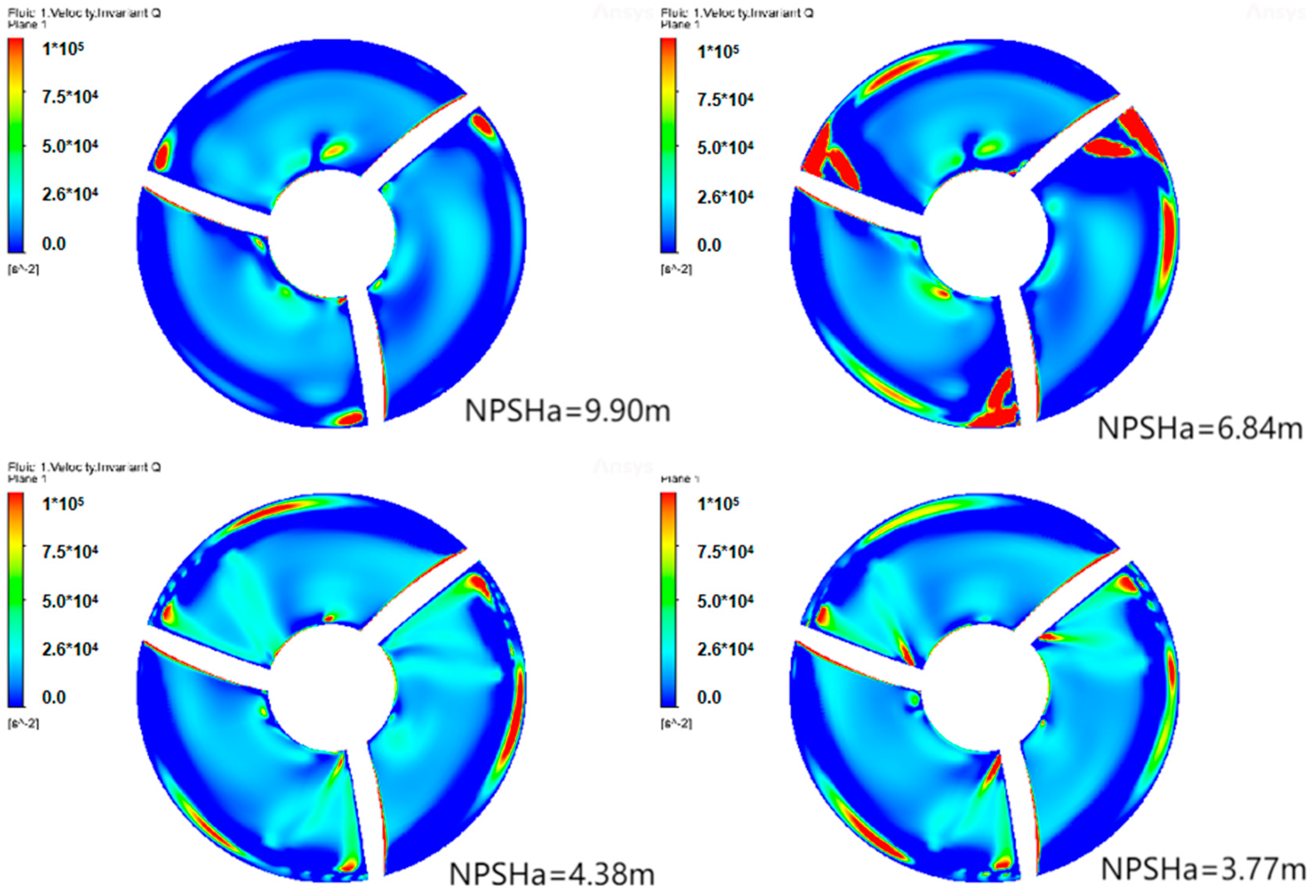
| Calculation Area | Inlet Pipe | Impeller | Diffuser | Outlet Pipe |
|---|---|---|---|---|
| Number of grids | 1,934,400 | 3,753,036 | 3,878,100 | 1,917,332 |
| Number of nodes | 1,972,754 | 3,895,776 | 4,034,890 | 1,956,058 |
Disclaimer/Publisher’s Note: The statements, opinions and data contained in all publications are solely those of the individual author(s) and contributor(s) and not of MDPI and/or the editor(s). MDPI and/or the editor(s) disclaim responsibility for any injury to people or property resulting from any ideas, methods, instructions or products referred to in the content. |
© 2023 by the authors. Licensee MDPI, Basel, Switzerland. This article is an open access article distributed under the terms and conditions of the Creative Commons Attribution (CC BY) license (https://creativecommons.org/licenses/by/4.0/).
Share and Cite
Lai, H.; Wang, H.; Zhou, Z.; Zhu, R.; Long, Y. Research on Cavitation Performance of Bidirectional Integrated Pump Gate. Energies 2023, 16, 6784. https://doi.org/10.3390/en16196784
Lai H, Wang H, Zhou Z, Zhu R, Long Y. Research on Cavitation Performance of Bidirectional Integrated Pump Gate. Energies. 2023; 16(19):6784. https://doi.org/10.3390/en16196784
Chicago/Turabian StyleLai, Huahuang, Haoshu Wang, Zhen Zhou, Rongsheng Zhu, and Yun Long. 2023. "Research on Cavitation Performance of Bidirectional Integrated Pump Gate" Energies 16, no. 19: 6784. https://doi.org/10.3390/en16196784
APA StyleLai, H., Wang, H., Zhou, Z., Zhu, R., & Long, Y. (2023). Research on Cavitation Performance of Bidirectional Integrated Pump Gate. Energies, 16(19), 6784. https://doi.org/10.3390/en16196784







